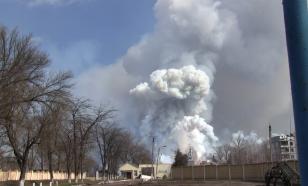Australian wine is feeling the heat of climate change
Australia's booming wine industry faces drastic changes due to global warming as creeping temperatures spoil the taste of reputable labels and winegrowers search for cooler climates to plant new vines.

The sensitivity of wine grapes - differences of one or two Celsius season-to-season can significantly change the taste and quality of a vintage - also makes the sector a potential harbinger for other crops in southern Australia.
"In relation to global warming, the wine industry is the canary in the coal mine because it's one of the most sensitive indicators of climate change," said Richard Smart, a respected viticulturist and author on wine grape growing.
The changes are not expected to threaten the almost 3 billion Australian dollars (US$2.47 billion; EUR1.84 billion) a year export industry that puts Australian wine on dining tables across the United States, Britain and elsewhere - at least not yet.
But producers must think ahead to adapt to climate change or face declining quality, experts say.
Third generation vigneron Brian McGuigan has no doubt global warming is already changing the character of wine flowing from the Hunter Valley, Australia's oldest vineyard district and one of the most prestigious.
"We're noticing that the seasons have moved forward and that is reflected by the time at which you pick the grapes and also the time that the buds burst on the vines and the way in which the fruit matures," said McGuigan, who began noticing the changes in the valley north of Sydney in the mid 1990s.
Rising temperatures make grapes ripen earlier, leading to declines in fruit flavors and changes in important characteristics such as acid content and color.
The latest report by the influential International Panel on Climate Change said this week that Australia and neighboring New Zealand, also a fast growing producer of quality wine, can expect more severe droughts and increased flooding due to rising temperatures by 2030, along with more frequent heat waves and fewer frosts.
The result will be a drop in agricultural production in southern and eastern Australia as well as eastern New Zealand, the report said.
Subscribe to Pravda.Ru Telegram channel, Facebook, RSS!


